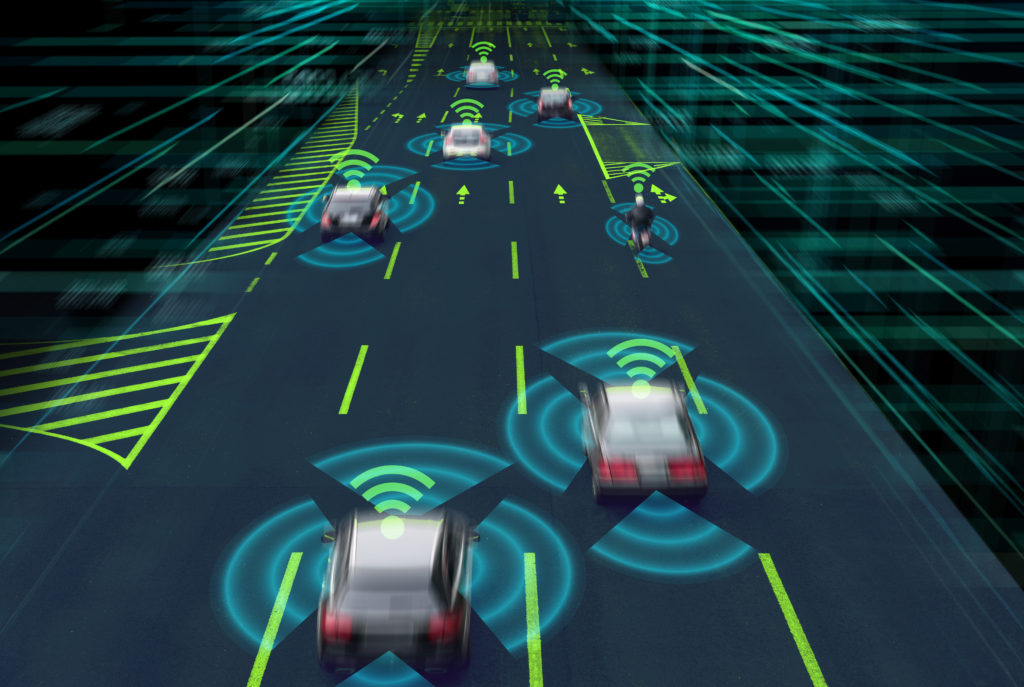Digital Mobility
The tyre industry calls for sectoral legislation on vehicle data
Over the last few years, we have experienced an unprecedented transformation of the automotive services market due to digitalisation. The tyre, mobility and aftermarket services are being disrupted and reshaped through the use of data. In this emerging and promising market, access to vehicle data is a key enabler of innovation and services provisioning.
However, the current technical solutions to access vehicle data, via the original equipment connection, put the vehicle manufacturer in a gatekeeper position, vis à vis data generated by the vehicles of its brands. Only a regulation can ensure the level playing field for all mobility stakeholders, necessary to foster competition and innovation on the nascent mobility services market.
ETRMA calls the European Commission to establish a sector-specific EU legal framework to access in-vehicle data, allowing enhanced mobility services to be developed and deployed.
In this regard, ETRMA’ position is summarised in the “Tyre industry position on in-vehicle data access” document, calling for the European Commission to publish an ambitious legislative proposal on access to in-vehicle data.
After having participated to the “Access to in-vehicle data” Workshop organised by the EU Commission, the European Tyre & Rubber Manufacturers’ Association expects the European Commission to publish a legislative proposal on access to in-vehicle data within the first quarter of 2022. This would create fair and secure in-vehicle data access that will enable a level playing field for all automotive stakeholders.
The lack of access to in-vehicle data and functions increasingly and seriously impedes the tyre industry ability to innovate and to provide the consumers with the digital services they expect.
In this respect, ETRMA, through its position paper, invites the European Commission to consider the following points:
- Resolve any ambiguities resulting from the absence of legislation or from horizontal rules across sectors;
- Allow fair competition for all actors in the mobility ecosystem with a clear requirement of separation of duties for the role of OEM as vehicle manufacturer and mobility service provider;
- Help the industry to plan its next steps by clarifying the definition and remit of digital services as they apply to “native” connected vehicles;
- The future governance of vehicle data access must place users at its heart, in line and with the same ambition of the fundamental principles of separation of duties, data sharing and privacy protection.
Further information:
Secure On-Board Telematics Platform (S-OTP)
ETRMA joined forces with other industry associations to describe a future-proof concept, namely Secure On-Board Telematics Platform (S-OTP). S-OTP is a set of requirements based on equipment, which is already in the vehicle and on existing standards. By deploying this concept, end-users can experience services from different service providers, which are independently assessed, tested and approved and thus perceived as true consumer choice.
To know more please have a look at the S-OTP paper. This paper came as one of the follow-up steps after ETRMA co-signing a manifesto for fair digitalisation opportunities since 2018.
Tyre-as-a-Service (TaaS)
Gathering of the real-time data on tyre health, performance, and environmental conditions, has allowed us to deliver both on our environmental goals as well as to meet the needs of modern mobility. The data we collect enables us to develop predictive maintenance solutions, allowing vehicle operators to proactively address issues before they escalate, thereby enhancing safety and reliability on the road.
An example which best showcases how data can help foster advancements in mobility is Tyre-as-a-Service (TaaS).
This is demonstrated by an industry report commissioned in 2019 by ETRMA and carried out by Quantalyse , introducing the concept of Tyre-as-a-Service.
TaaS goes beyond tyres and today tyre makers have already developed a diversified pool of telematics solutions for data sharing, connected vehicles and mobility.
Moreover, TaaS describes the concept of providing tyres and the associated services under a subscription model with strong consideration of all direct and indirect safety, environmental, economical and usability impacts, for the customers and the society. The optimisation of TaaS requires in-depth understanding of all the dimensions and their interdependencies for each application case. The development of this understanding requires the availability, collection, and processing of vehicle, environmental, and operational data.
This has immense potential, particularly, in the case of infrastructure quality management enhancement and vehicle platooning to increase road safety, reduce vehicle emissions and decongest urban roads.
Useful Links
- ETRMA calls on the Commission for “A regulatory framework on access to vehicle data” (31/05/2021)
- A large coalition representing the automotive aftermarket and consumers called on the EU to take on board its proposal for a Secure On-board Telematics Platform (S-OTP) when legislating on access to in-vehicle data S-OTP (30/03/2021)
- European Parliament recognises in-vehicle data as essential in its Own Initiative Report on Cooperative Intelligent Transport Systems (14 March 2018)

Tyres-as-a-service fuses innovative telematics solutions with tyre technology...
These services range from small micro services (apps or devices) and vehicle monitoring for individual drivers to fully-fledged service packages for fleets enabling the creation of large universal vehicle data platforms for third parties. These services can verifiably help drivers and fleet operators to save fuel, increase safety, increase vehicle uptime, and reduce congestion and harmful emissions from transport.

Infrastructure quality management enhancement is a field...
where cooperation between the tyre industry and (local) governments can yield significant gains in tackling mobility issues like congestion, fatalities and pollution. Advanced vehicle data measurement and modelling can inform drivers and authorities of road conditions, danger zones and traffic flow. The tyre industry has the means and resources to develop the advanced technology to realize this potential of the connected vehicle.












